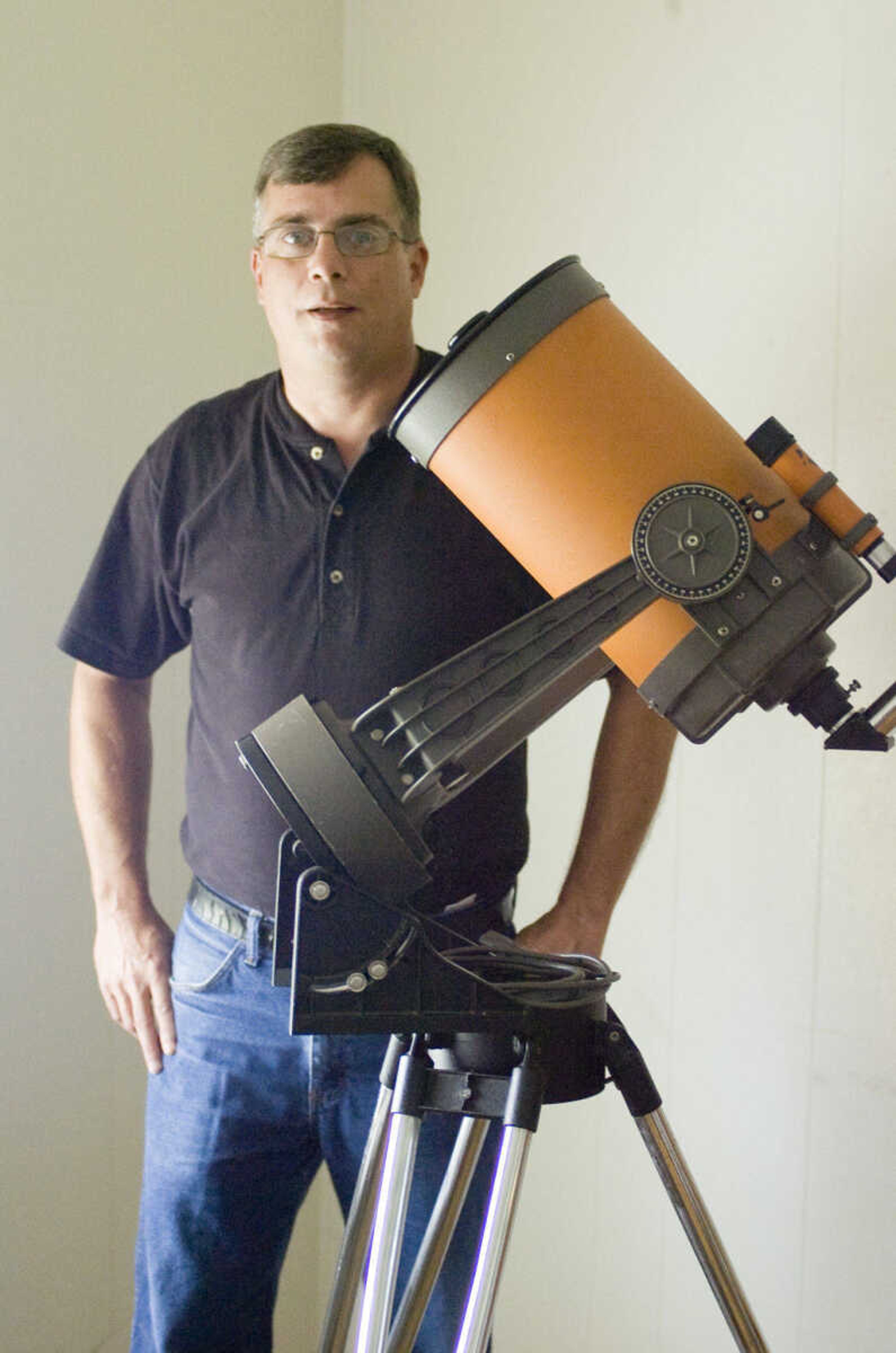NASA confirms amateur's assertion that UFO seen in Southeast Missouri was space station
POPLAR BLUFF, Mo. -- Unidentified orange lights sighted last month in the evening sky over Southeast Missouri gave a Poplar Bluff man an opportunity to put his self-taught astronomy expertise to use.
POPLAR BLUFF, Mo. -- Unidentified orange lights sighted last month in the evening sky over Southeast Missouri gave a Poplar Bluff man an opportunity to put his self-taught astronomy expertise to use.
Ed Matott made contact with the Southeast Missourian after reading about the event and offered his theory about what was reported that night.
"Usually there's an explanation," said Matott, 48, who has studied outer space as a hobby for most of his life.
The time the incident occurred and reports that the lights flew across the sky from the south to the northeast indicated the international space station had been spotted, he said, a theory that has now been confirmed by NASA.
"As it passes over, it is the brightest thing in the sky, depending on your visibility," Matott said. "It tends to generate UFO reports."
But in this instance, it was the space program itself that caused the phenomena, according to a NASA official. NASA receives hundreds of calls every year about potential UFO sightings.
"For sure, it was the space station going over," said John Weis, aerospace education specialist with NASA. "What they were seeing was light reflecting off the solar panels."
The large panels produce about 100 kilowatts of electric power. Under the proper conditions, shortly after the sun sets or before it rises, a reflection can be seen with the naked eye.
Roughly the size of a football field, the space station travels nearly 250 miles off the ground at about 17,500 mph, close to 35 times the speed a commercial jet flies, Weis said.
Public involvement
Weis, who works at the Marshall Space Flight Center in Alabama, visited Poplar Bluff in April to teach an activity intended to engage students in planning a trip to the moon. He is scheduled to return to Three Rivers Community College on Oct. 1 and 2 to hold another free workshop series for area educators entitled, "Tour of the Solar System."
Dr. Kathy Prejean, a biology and microbiology instructor at Three Rivers, was instrumental in bringing NASA to campus. She conducted her dissertation with NASA funding, concluding that life could exist on Mars.
"There are times when amateurs definitely bring the attention and focus to a particular point or event in space," Prejean said. "The universe is so vast. It depends where you are on the Earth, your skills and knowledge level and the types of tools at your disposal as to what you may encounter."
On July 20, an amateur astronomer in Australia identified an Earth-sized dip on Jupiter and NASA scientists were later able to verify that a massive falling object had collided with the planet.
Matott captured footage of Jupiter displaying multiple impacts from 15 years ago, when fragments of a comet struck the planet. He connects his video camera to his telescope, essentially turning it into the equivalent of a 2000-millimeter telephoto lens.
Hooked on astronomy
Originally from Syracuse, N.Y., Matott received his first telescope as a Christmas present from his father in 1971. The following spring he had some success testing it out and he has been stargazing ever since.
"I zoomed in on what I thought was a star and I noticed it had rings," recalled Matott. "I discovered Saturn, so to speak, and I was hooked."
Like many people during that era, Matott was "caught up in the Apollo missions." He said he remembers watching the astronauts land on the moon from television.
Matott still has copies of Sky & Telescope magazine from the 1970s and '80s.
"Back then, it was the only information you had on the field, but of course you got the news a month late," he said. "Now the Internet has changed everything."
Although he said becoming an astronaut may have been his dream as a boy, he joined the U.S. Navy out of high school rather than going on to study astronomy in college. He operated a ballistic nuclear missile-carrying submarine off the Hawaiian coast.
After his military career, he moved to Missouri, where he eventually got a job at Briggs & Stratton.
Over the years, he never lost his celestial curiosity. Through an 8-inch-diameter lens, he has seen all the planets but Pluto, because it is too faint to be visible using the $900 piece of equipment he purchased in 1979.
Now, Matott uses his computer to monitor the progress of the international space station by generating an up-to-date orbit simulation at any given location.
"Nowadays the world's biggest observatories are on top of mountains and you can watch from a computer screen," Matott said. "Years ago, scientists had to drive up there with their telescopes. I still prefer to go outside and look."
Connect with the Southeast Missourian Newsroom:
For corrections to this story or other insights for the editor, click here. To submit a letter to the editor, click here. To learn about the Southeast Missourian’s AI Policy, click here.










